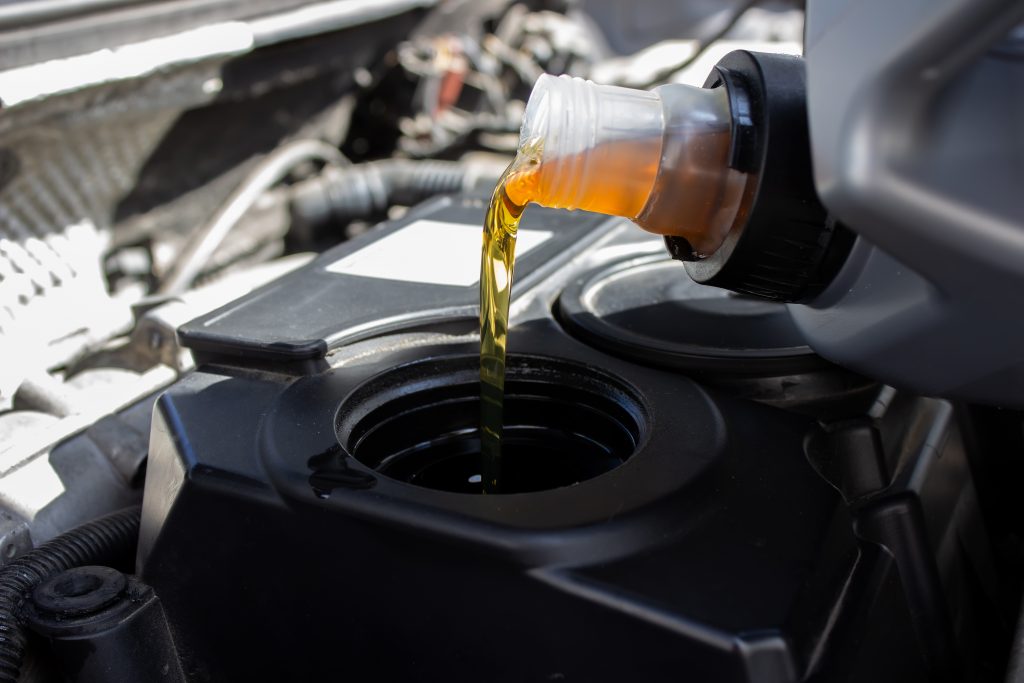Maintaining the correct oil level in your car is crucial for keeping the engine running smoothly. In this guide, we will explore the step-by-step process of checking your car’s oil to ensure your vehicle stays in top condition. By understanding how to check your car’s oil, you can confidently take care of your vehicle and avoid potential engine problems down the road.
Why Regularly Checking Your Car’s Oil is Important
Regularly checking car oil is a fundamental part of vehicle maintenance. Oil lubricates the engine, helping it run smoothly and preventing friction between moving parts. The engine can overheat and become damaged without sufficient oil, leading to costly service repairs. By regularly checking your car’s oil, you can guarantee that your engine remains well-lubricated and in good working condition. Contact us if you have any concerns about your vehicle.
How to check the oil in a car
- Park your car on a level surface and allow the engine to cool down for a few minutes. This allows the oil to settle, giving you an accurate reading when you check the level.
- Locate the oil dipstick, which is usually a brightly coloured handle that is easily accessible beneath the hood of your car. It’s important to refer to your car’s manual to pinpoint the exact location of the dipstick, as it can vary depending on the vehicle’s make and model.
- Carefully pull out the dipstick and wipe the oil off with a cloth or paper towel. This ensures that any residual oil does not affect your reading.
- Reinsert the dipstick all the way back into its tube, then pull it out to check the oil level. The oil should be between “Min” and “Max”. If it’s below the “Min” mark, you need to add oil to bring it to the recommended level.
- Regardless of the level, if the oil appears dark and gritty, it may be time for an oil change. Clean, high-quality oil is essential for proper engine function.
Following these steps and being diligent about checking car oil will help you keep your engine in optimal condition, ensuring smooth performance and longevity for your vehicle.
What to Do If Your Oil Level is Low
If your oil level is low, it is essential to add the appropriate type of oil for your car. Refer to your car’s manual for the correct oil specification and viscosity. Add a small amount of oil at a time, checking the dipstick after each addition to ensure you do not overfill.
After you have checked the oil level and quality, securely reinsert the dipstick back into its tube to avoid any potential leaks. Additionally, always use the recommended type of oil for your vehicle, as using the wrong oil can negatively impact your car’s performance. It’s essential to routinely check and change your car’s oil to ensure the engine runs smoothly and efficiently, ultimately extending the life of your vehicle. If you need help with how to check your car oil level or performing an oil change, it’s best to consult your vehicle’s manual or seek the assistance of a qualified mechanic.
Choosing the Right Oil for Your Car
When selecting oil for your car, consider viscosity, performance rating and manufacturer recommendations. The right oil can help prolong your engine’s life and optimise performance.
Inspecting the Oil Filter
When performing an oil change, inspecting the oil filter is also a good idea. Over time, the oil filter can become clogged with debris, compromising its effectiveness in keeping the oil clean. A clogged oil filter can restrict oil flow, leading to potential engine damage. Therefore, replacing the oil filter according to the manufacturer’s recommended schedule or whenever you change the oil is advisable.
Keep an Eye on Performance
In addition to checking the oil level and quality, monitoring your car’s overall performance can provide valuable insights into its oil needs. If you notice any unusual noises, such as knocking or ticking sounds coming from the engine, it’s essential to address these issues promptly. Unusual engine noises could indicate insufficient lubrication, which may indicate low oil levels or a problem with the oil circulation system.
Remember, taking proactive measures to maintain your car’s oil is not just a task; it’s a responsibility that can prevent costly repairs and contribute to a smoother and more efficient driving experience. By incorporating oil checks into your regular vehicle maintenance routine, you can confidently drive, knowing your engine is well-cared for and primed for optimal performance.
By regularly checking and maintaining the correct oil level in your car, you can effectively extend the life of your engine and ensure smooth, trouble-free driving. This small investment of time and effort in checking your car’s oil can save you from significant car troubles in the future, providing a sense of security and peace of mind.
Contact Us Today
Contact us today to keep your vehicle in tip-top condition!

